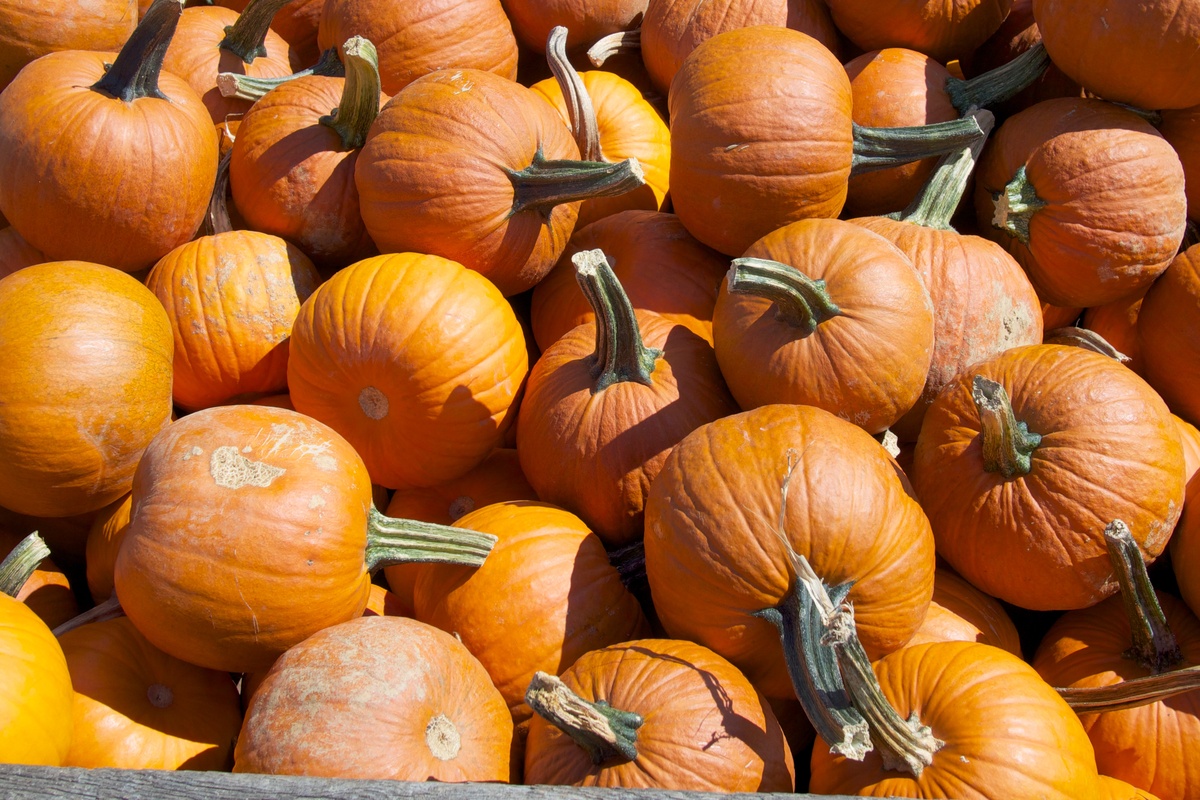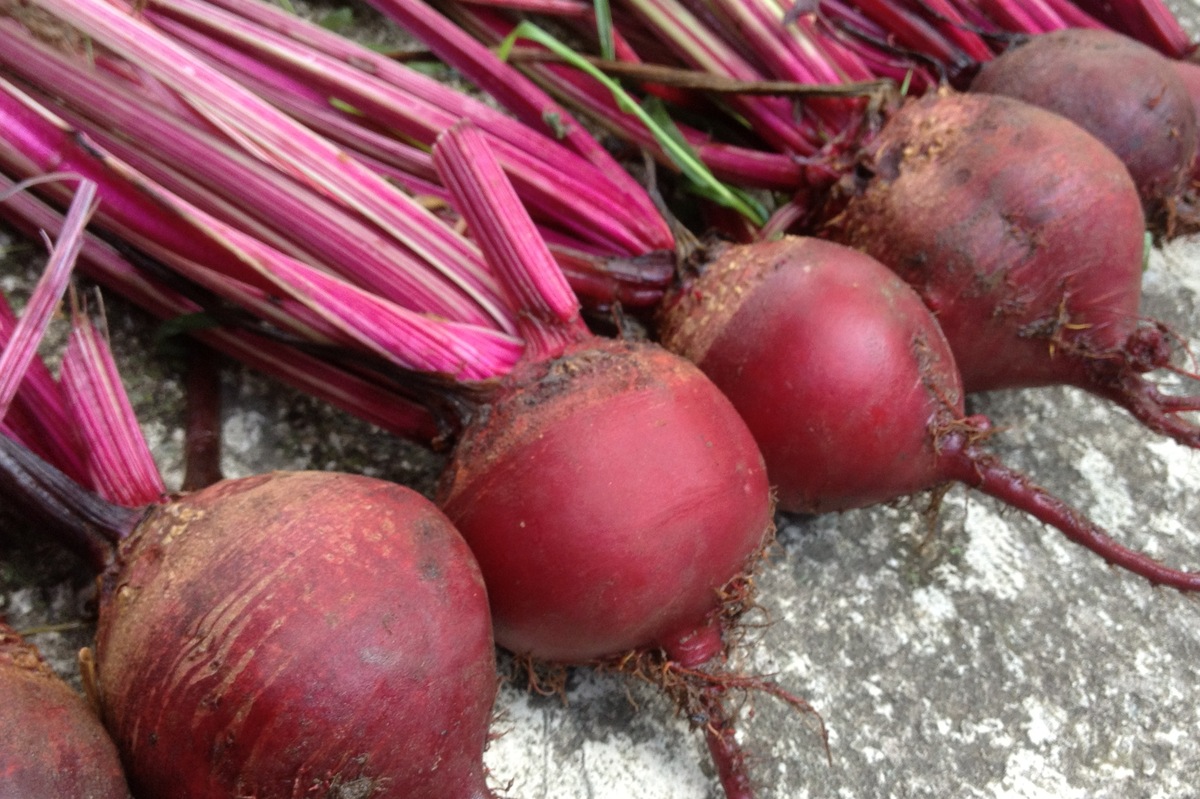October Super Foods
3:22 PM
One of our favorite reasons to smile this season is the abundance of fresh, colorful and did-we-mention delicious fall produce.
A number of nutritional rock stars from September will remain ripe this month and next -- we're looking at you, apples -- but there are some healthy picks unique to October, too.
Carrots
Why we love them: Another great source of eyesight-boosting vitamin A and beta-carotene, carrots are also rich in fiber, potassium and vitamins C and K. Pratt calls them a pumpkin's sidekick, with similar nutrients in smaller amounts.
How to enjoy: Crunch on the sticks raw or, for even better nutrient absorption, try lightly cooking them, reports Everyday Health.
How to enjoy: Crunch on the sticks raw or, for even better nutrient absorption, try lightly cooking them, reports Everyday Health.
Pumpkins
Why we love them: October's signature gourd is good for more than just that Jack-O-Lantern. A cup of mashed pumpkin packs more than 200 percent of your daily recommended vitamin A, crucial for healthy vision and immune system functioning, among other things.
Pumpkin is also rich in alpha- and beta-carotene, two nutrients that have been associated with longevity, says Dr. Steven G. Pratt, M.D., author of several books on nutrition, including
Pumpkin is also rich in alpha- and beta-carotene, two nutrients that have been associated with longevity, says Dr. Steven G. Pratt, M.D., author of several books on nutrition, including
Pomegranates
Why we love them: The tasty fall fruit is loaded with heart-healthy antioxidants, fiber and vitamins C and K. Pomegranate has also been linked to fighting prostate and breast cancers, says Pratt.
How to enjoy: Mix the seeds into your morning cereal or into a salad, Cheryl Forberg, R.D., former nutritionist for "The Biggest Loser" told HuffPost in June. Or opt for the juice, which is made from the entire fruit, says Pratt, giving you the added nutrients found in the skin of the fruit, which is otherwise too tough to eat.
How to enjoy: Mix the seeds into your morning cereal or into a salad, Cheryl Forberg, R.D., former nutritionist for "The Biggest Loser" told HuffPost in June. Or opt for the juice, which is made from the entire fruit, says Pratt, giving you the added nutrients found in the skin of the fruit, which is otherwise too tough to eat.
Artichokes
Why we love them: While their longest peak is from March to May, artichokes experience an autumnal mini-peak in October. Artichokes are good sources of vitamin C and fiber, and the hearts in particular are a surprisingly rich source of antioxidants. A 2006 study ranked them number one in terms of antioxidant density, higher than well-known picks like dark chocolate and blueberries, HuffPost reported. Plus they’re low in calories and it takes a while to eat them, Pratt points out. “You get all the pleasures of eating without a whole lot of calories, and quite a bit of fiber, too,” he says
How to enjoy: Steam the entire thing or add the hearts to a fall-flavored salad. Just be careful with dips—it’s easy to mindlessly drench leaves in butter or mayo, says Pratt. Opt for olive oil and non-salt seasoning instead.
Beetroot
Why we love them: The rich color of these root veggies is a tell-tale sign of the health benefits within. The compounds that give beets their color have powerful antioxidant and anti-inflammatory properties, similar to those of pomegranates and blueberries, says Pratt.
How to enjoy: They work great raw in a salad, but beets can also be roasted, pureed into soup, stirred into risotto and more.
How to enjoy: They work great raw in a salad, but beets can also be roasted, pureed into soup, stirred into risotto and more.
Cabbage
Why we love it: When it's not swimming in a mayo-y cole slaw, this often-overlooked fall veggie is surprisingly beneficial to your health. Cabbage is a good course of vitamin C, fiber and potassium. It also may play a role in fighting cancer, like a number of other superfoods in the same family, like broccoli, says Pratt.
How to enjoy: Try it as a sandwich or burger topping, suggests Men's Health or opt for a lighter, homemade slaw. The New York Times shares some tasty-looking soup recipes and Pratt suggests adding purple cabbage to your next spinach salad.
How to enjoy: Try it as a sandwich or burger topping, suggests Men's Health or opt for a lighter, homemade slaw. The New York Times shares some tasty-looking soup recipes and Pratt suggests adding purple cabbage to your next spinach salad.
Onions
Why we love them: While the tear-inducing bulb is essentially available year-round, the crop is peaking in a number of states across the countryin October, according to the seasonal ingredient map at Epicurious.
Onions have been linked to lower cholesterol and blood pressure and reduce risk of prostate cancer, not to mention they pack anti-inflammatory and anti-histamine properties.
Onions have been linked to lower cholesterol and blood pressure and reduce risk of prostate cancer, not to mention they pack anti-inflammatory and anti-histamine properties.
Article “7 October Superfoods” by Sarah Klien with Huffington Post. Read more :http://www.huffingtonpost.com/2012/10/02/october-superfoods_n_1930091.html#slide=more254003
Best
Teen Diets recommends health well balanced eating that includes fruits,
vegetables, whole grains, protein and low-fat or fat-free dairy. We offer
nutrition information for teens, parents and educators that emphasizes the
importance of healthy well balanced eating for teens. For more information visit
www.bestteendiets.org



0 comments